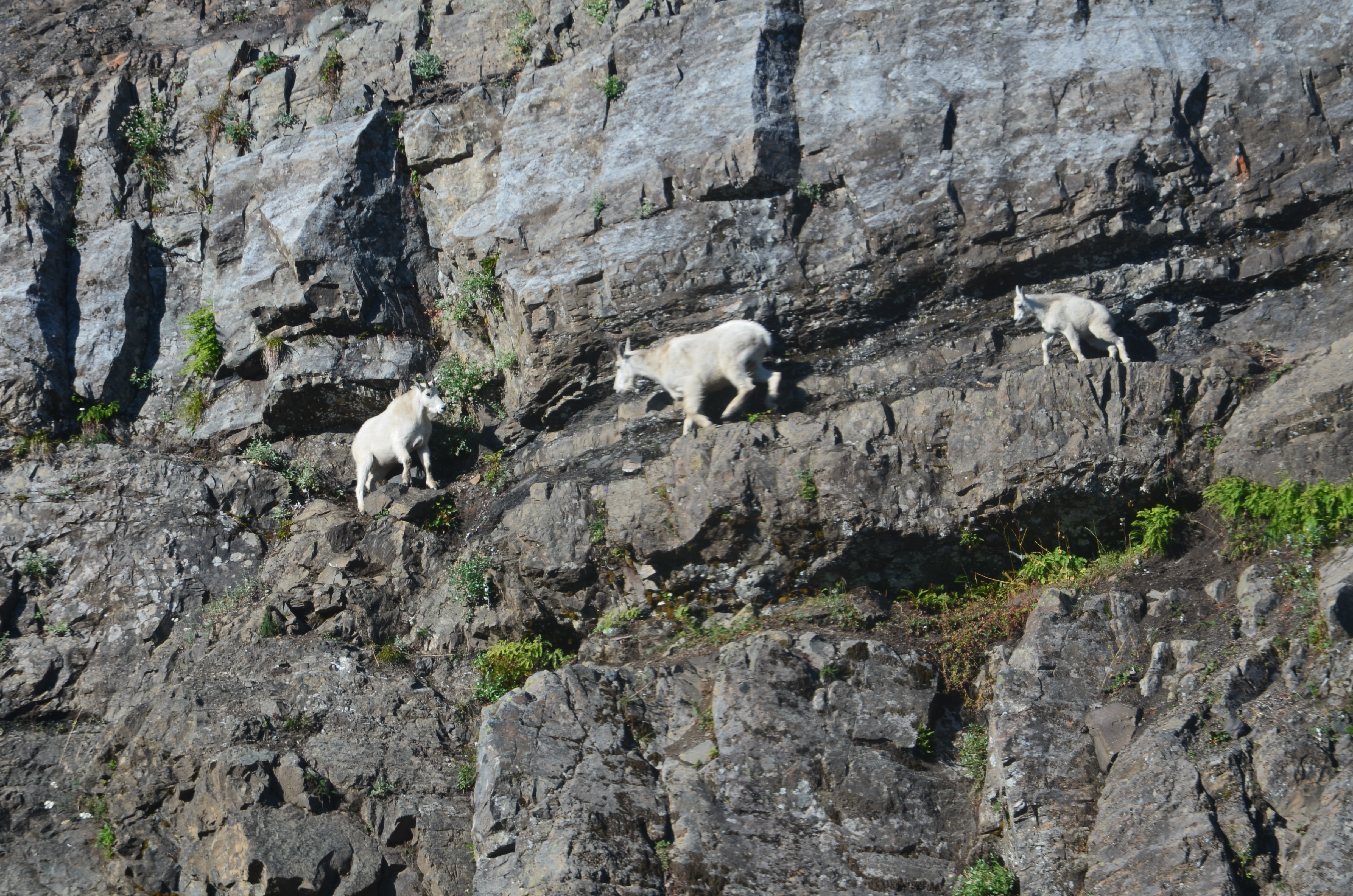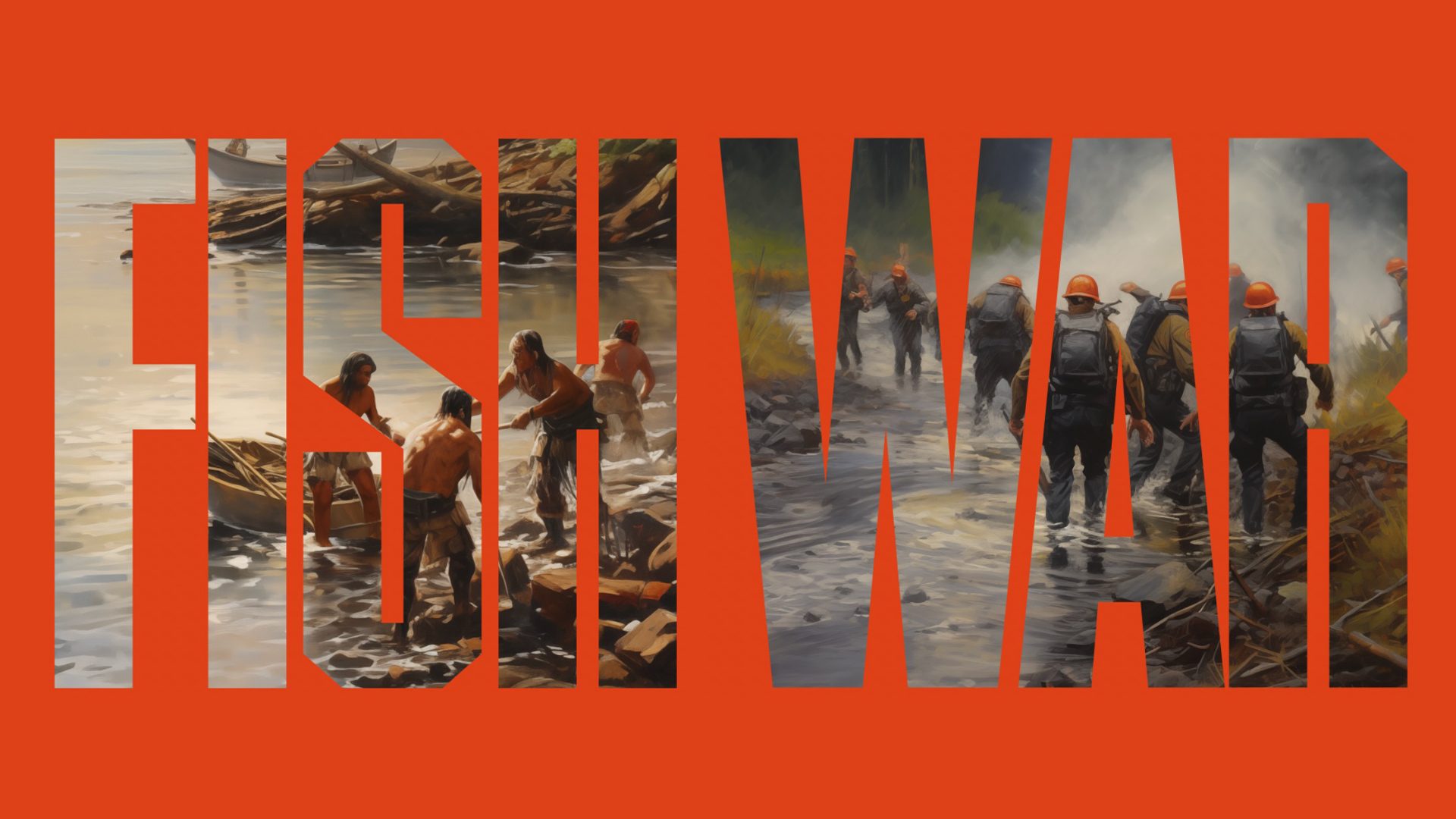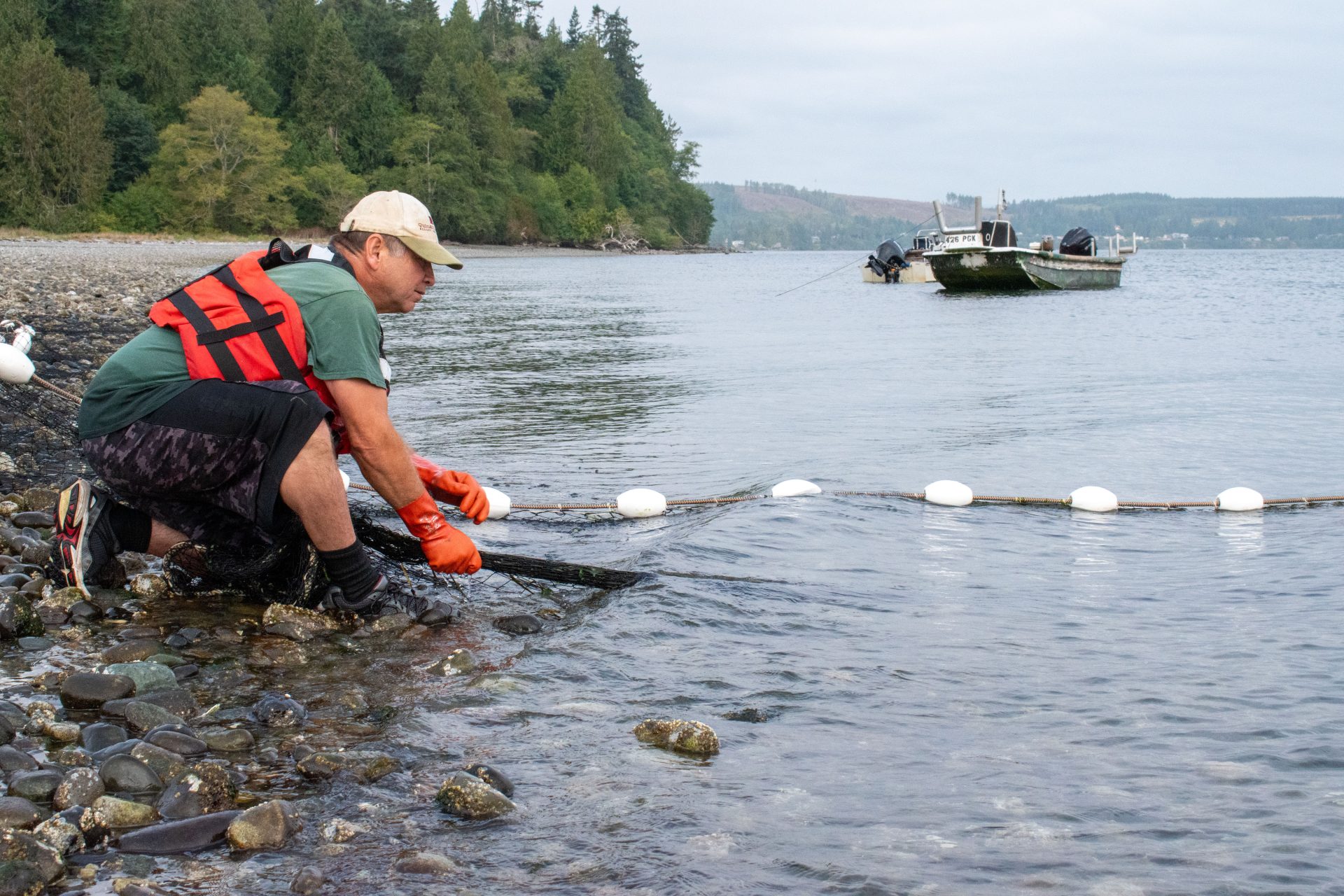DARRINGTON (June 10, 2004) — Every year, heavy snow forces North Cascades mountain goats near Darrington to descend from their high winter peaks. The wooly animals descend from Gamma Ridge.
Then they disappear.
For years, no one knew where the animals were going. Now, the tribal and state co-managers of Washington’s natural resources are performing a groundbreaking study that will answer important questions about the region’s goats, with a view to protecting herds like those on Gamma Ridge.
Key to the study is a comprehensive habitat model that will be essential for goat recovery. The Sauk-Suiattle Indian Tribe is pioneering the development of this new model.
“No one has done habitat modeling for the goats’ winter ranges before,” said Doug McMurtrie, environmental director for the Sauk-Suiattle Tribe. “We need to know as much information as possible about mountain goat habitat in order for our studies to be effective.”
The habitat model, which the Sauk-Suiattle Tribe is working on in conjunction with Western Washington University, will be especially valuable for planning herd recovery. While environmental models have been developed in the past, none has covered the animals’ all-important winter habitat.
These models can provide tribes and the state with multiple new tools to protect Washington’s goat populations.
“The habitat modeling can be useful in a number of different ways,” said Cliff Rice, wildlife biologist with the Washington Department of Fish and Wildlife. “Having a good habitat model, especially one that delineates between summer and winter habitat, will help in determining impacts of human activity, from hiking trails to snowmobiling to timber harvest. It will give us a better idea of how to plan for that activity so it has minimal impact on the goats.”
Tribal and state efforts to track the animals using global positioning systems will enhance the model’s effectiveness. Currently, the co-managers track about 24 radio-collared animals in this fashion; this summer, an additional 20+ animals will be captured and collared.
Already, the radio collars are yielding interesting information. The co-managers were able to track one goat as it traveled from one spot in the Goat Rocks Wilderness south of Mt. Rainier to Mt. Adams in one day, a trip of about 20 miles. Researchers say there seems to be quite a wide variation in how animals deal with winter. Some animals don’t change their range at all seasonally; others move considerable distances.
Though there is a great deal of variance in how different herds respond to the seasons, knowing what type of habitat goat herds select at what times of year will be invaluable in terms of land-use planning. “All of this will be really interesting when we put it together into a comprehensive picture,” says Rice.
“Culturally, the mountain goat has always been important to us,” said Jason Joseph, chairman of the Sauk-Suiattle Indian Tribe. “We’re taught by our elders to think seven generations into the future, and this important scientific work will help us preserve the goat seven generations down the road.”
In conjunction with the co-managers, a host of stakeholders are working together on a slate of goat recovery projects, including:
· Expanding tracking and radio-collaring efforts;
· Hiring a new, full-time goat biologist for the Sauk-Suiattle Indian Tribe, a process that will be completed in September.
Scientists and tribal leaders hope that the data these efforts gather will reveal where goats like those in the Gamma Ridge herd go and why.
“Answering these questions is crucial to our understanding of what mountain goats need to survive, and the answers will help us protect them over the long term,” said Joseph.
Support and funding for mountain goat recovery efforts comes from a wide variety of sources, state, federal, tribal, and private.
“It’s been a truly cooperative, grassroots effort,” said McMurtrie. “Without these cooperative efforts, we couldn’t have gotten this far. But with all of us working together, we can give these goat herds a chance to survive.”
(END)
For more information, contact: Jeff Shaw, Northwest Indian Fisheries Commission, 360.424.8226; Doug McMurtrie, 360.436.0738; Jason Joseph, Sauk-Suiattle Indian Tribe, 360.436.1124.





